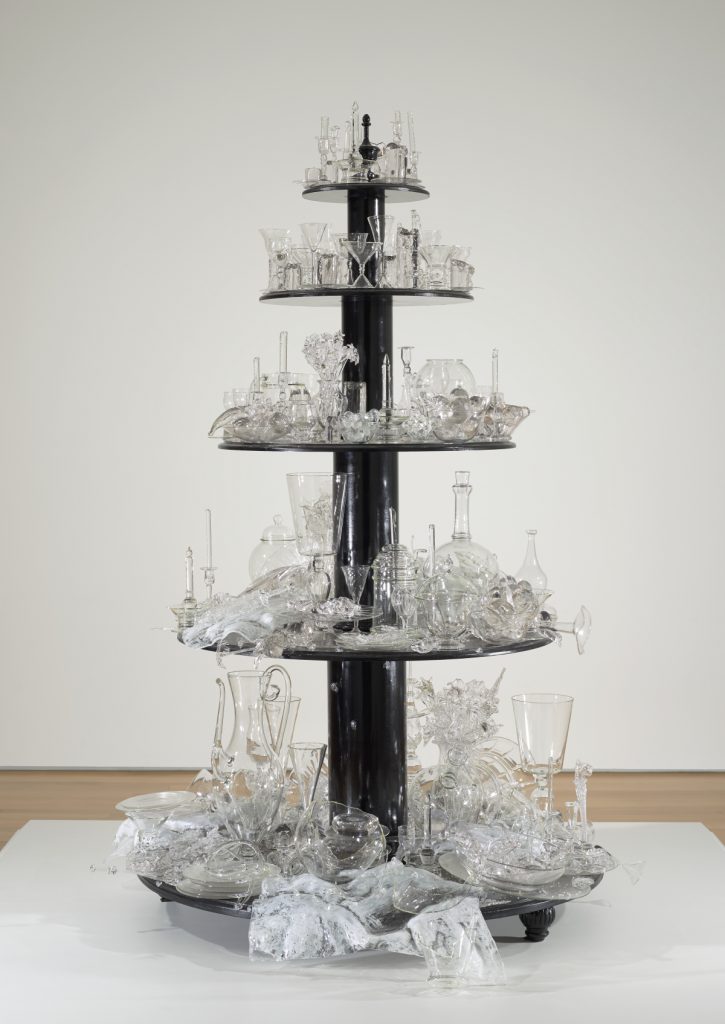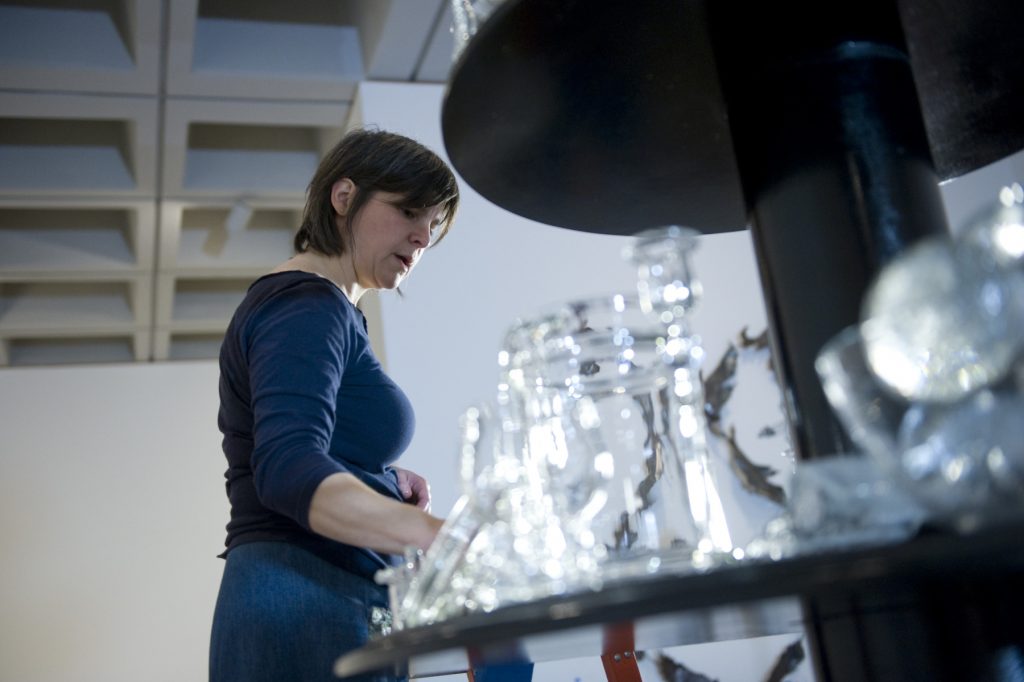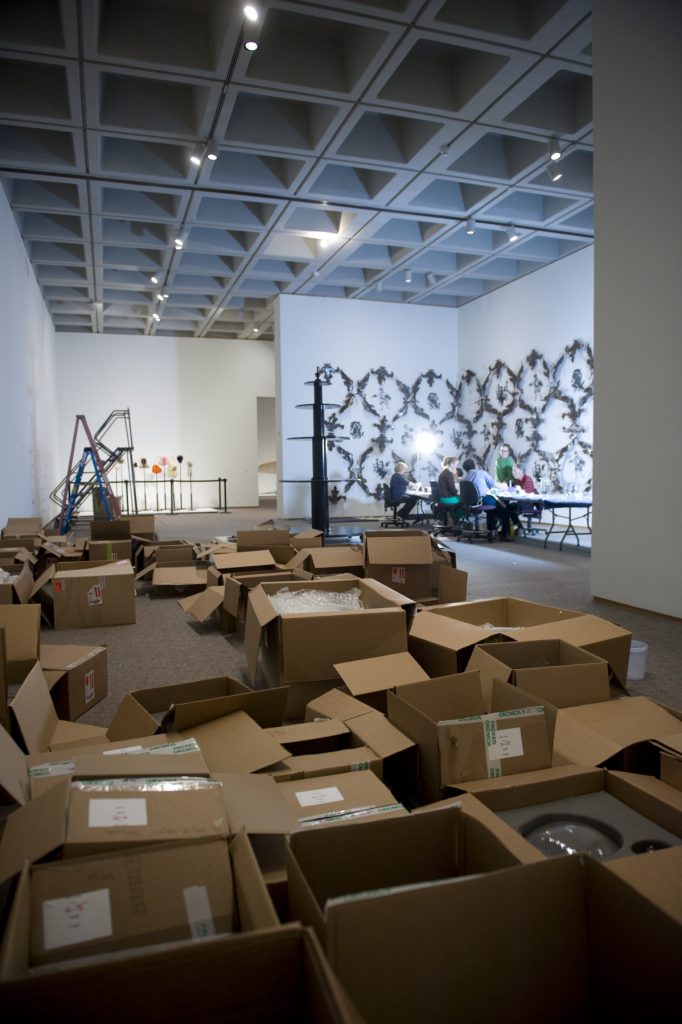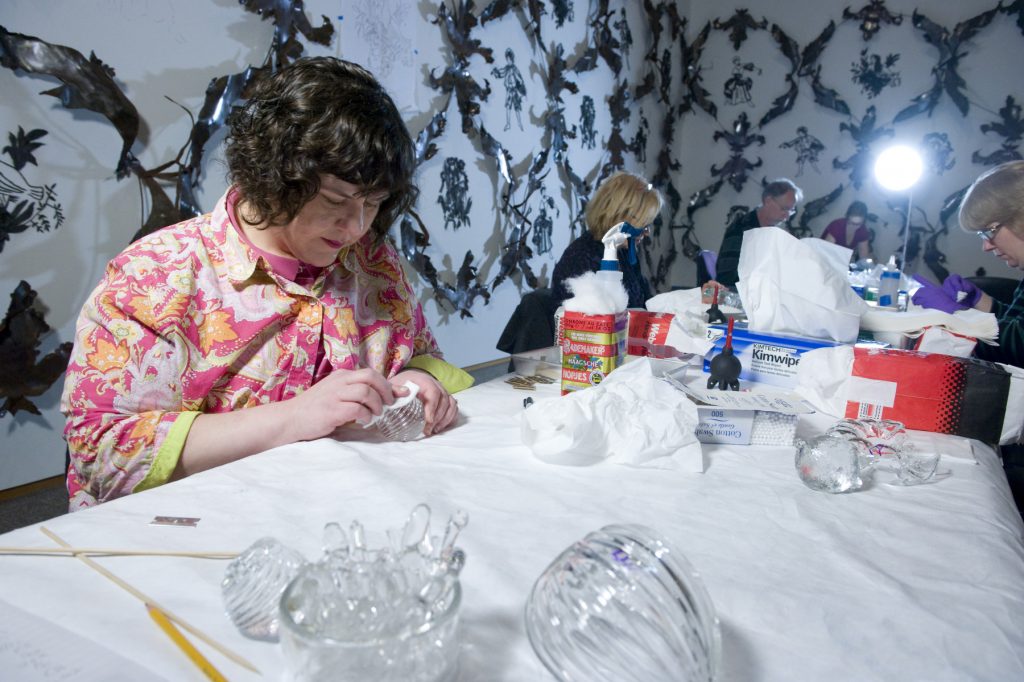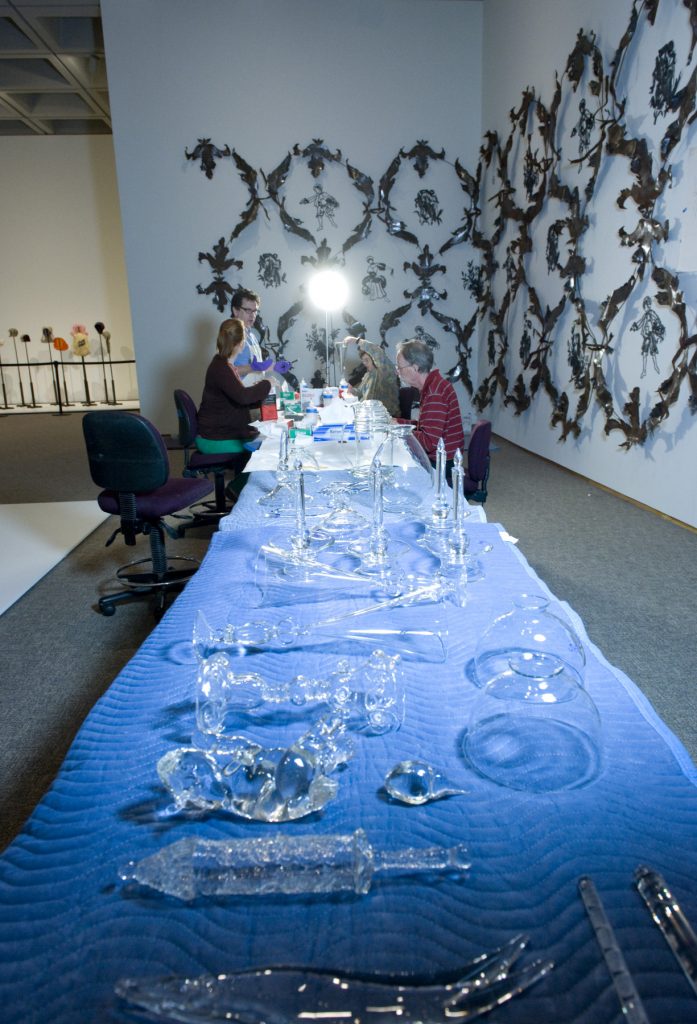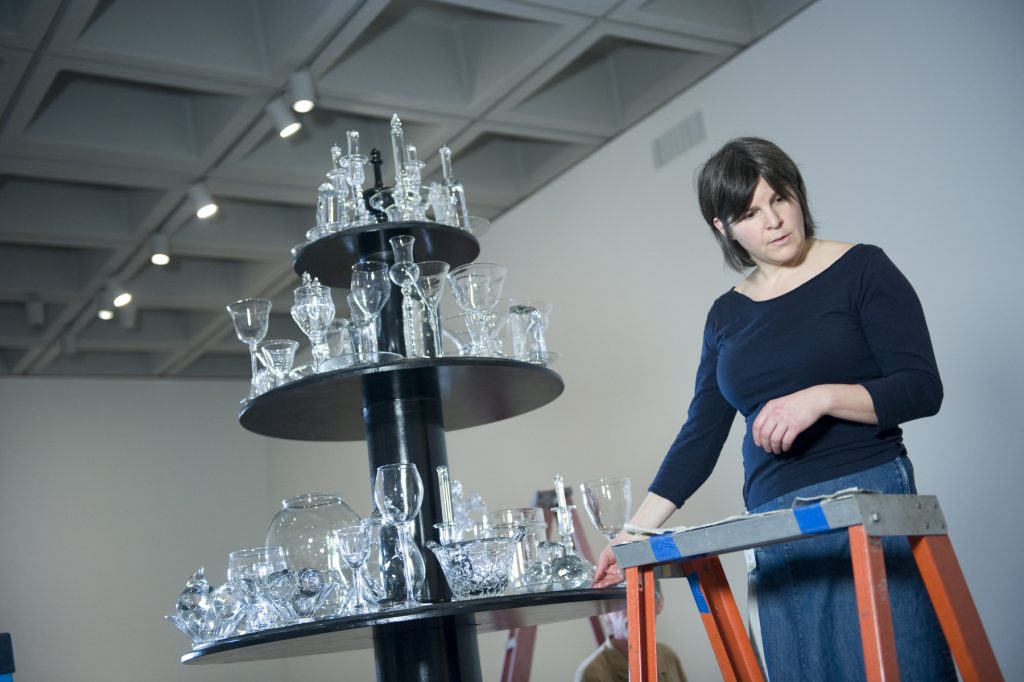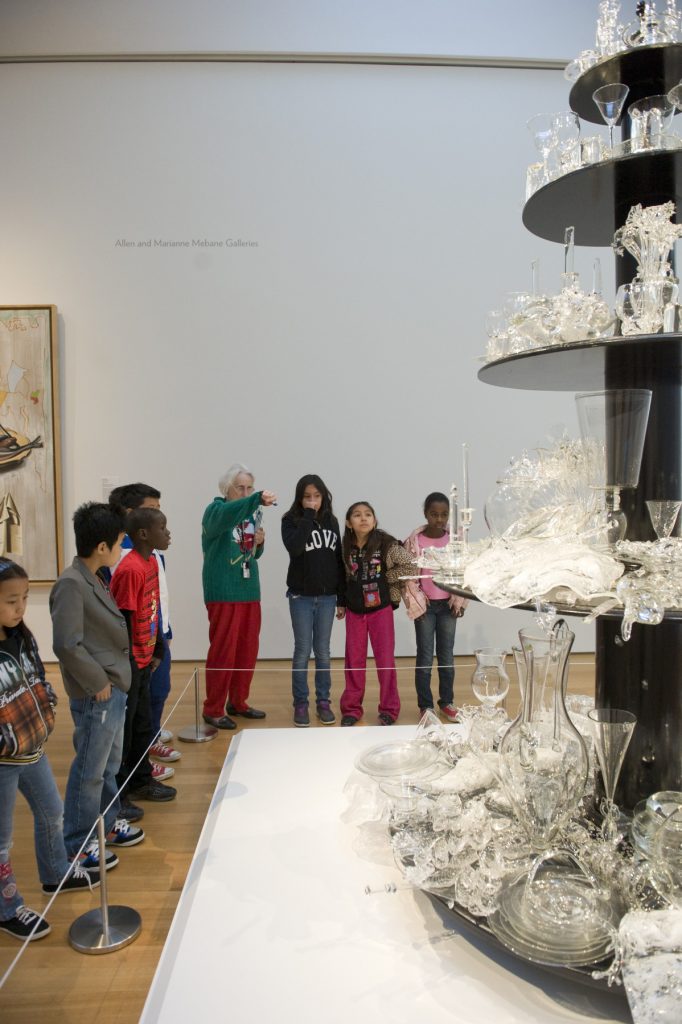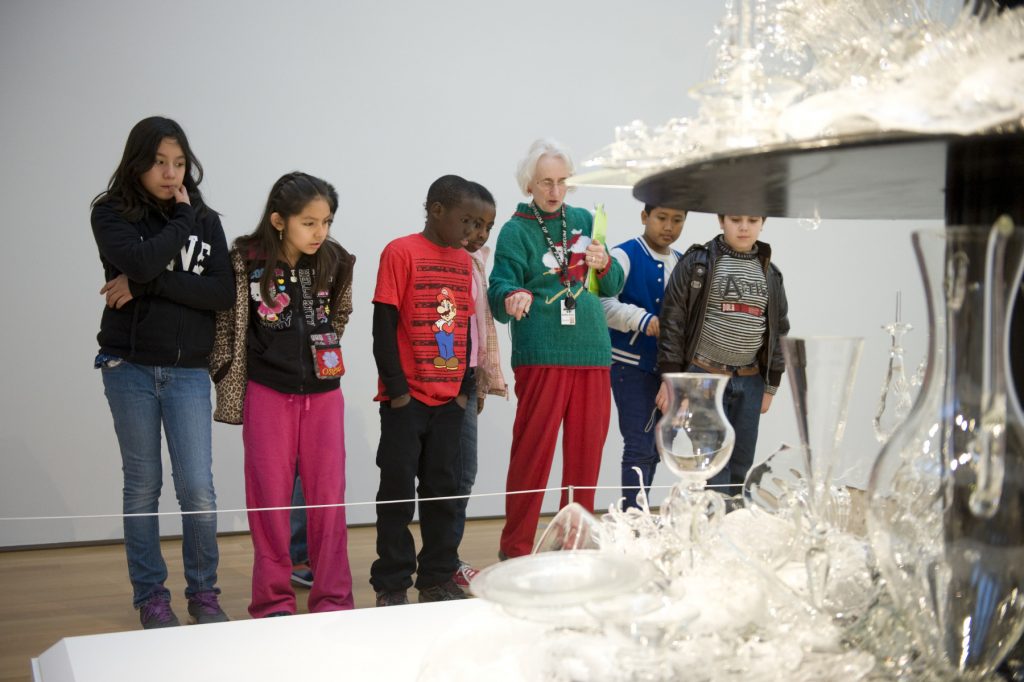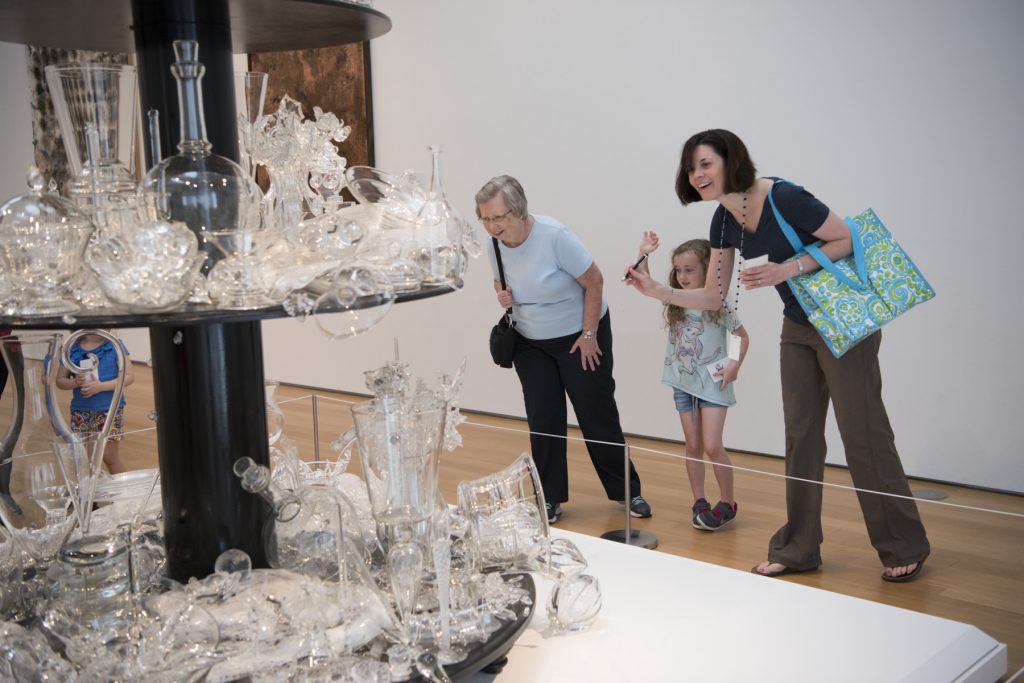Bride (work of art)
Artwork Info
Key Ideas
- Bride is a five-level, 10-foot-tall sculpture made up of more than 500 individual glass elements. The piece deteriorates from top to bottom as the glass becomes broken, warped, and then completely shattered by the final tier.
- This work of art was inspired by Dutch still life paintings that were popular in Europe during the 16th and 17th centuries. The term still life describes a work of art (usually a painting or sculpture) that uses nonliving, human-made or natural objects, such as cut flowers, food, and drinks. Still life art dates back to ancient Egypt and Rome. Still lifes have served different purposes throughout history, from displaying everyday objects or collections of sacred items for worship to preserving one’s wealth and status.
- Bride was also inspired by still lifes in the NCMA’s collection, including Pieter Aertsen’s A Meat Stall and Frans Snyders’s Market Scene on a Quay.
- The shape, or form, of Bride symbolizes a layered wedding cake or bridal gown, while the breakdown of the glassware represents society’s celebration of wealth and excess. Many of Beth Lipman’s glass still lifes represent the “consequences of human existence,” such as time, materialism, and mortality.
Learn More
This five-tiered, 10-foot-tall still life cascades down from perfect order to total chaos, as the more than 500 individual glass elements that make up this sculpture are knocked over, slumped, broken, melted, and shattered by the time they reach the bottom tier. This multilayered, crystal-clear still life alludes to the layers of a wedding cake or an elaborate bridal gown. It was inspired by a variety of still lifes in the NCMA’s collection, including a 17th-century German silver cup by Paulus Fischer and workshop; a plate of fish that appears in Pieter Aertsen’s 16th-century market scene painting A Meat Stall, as well as in David Salle’s painting The Emperor from 2000; the cat and bird in Frans Snyders’s 17th-century painting Market Scene on a Quay; a candlestick from Bernardo Strozzi’s 17th-century painting St. Lawrence Distributing the Treasures of the Church; and the 19th-century Ottoman Esther Scroll and Case from the Judaic collection. Although the wedding-related subject matter is specific to Bride, many of Lipman’s pieces explore ideas of human abundance and its impact on the environment.
tags: change, food, animals, time, part/whole, family, conflict, impact
Additional Resources
Resources for Teachers:
- Read an article about the history of still lifes.
- Explore an activity that invites students to view Bride from different perspectives.
- Explore another activity that provides instructions on how to build tiered cardboard cakes. This activity is designed for younger students but can be modified for all ages.
Resources for Students:
- Watch a video of artist Beth Lipman explaining Bride.
- Watch a video about the history of Dutch and Flemish still lifes.
- Create your own still life! This activity is designed for younger students but can be modified for all ages.

